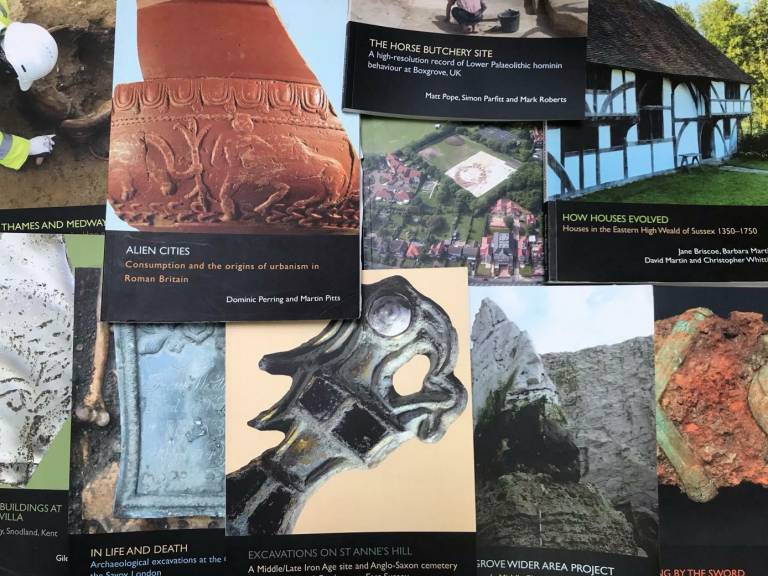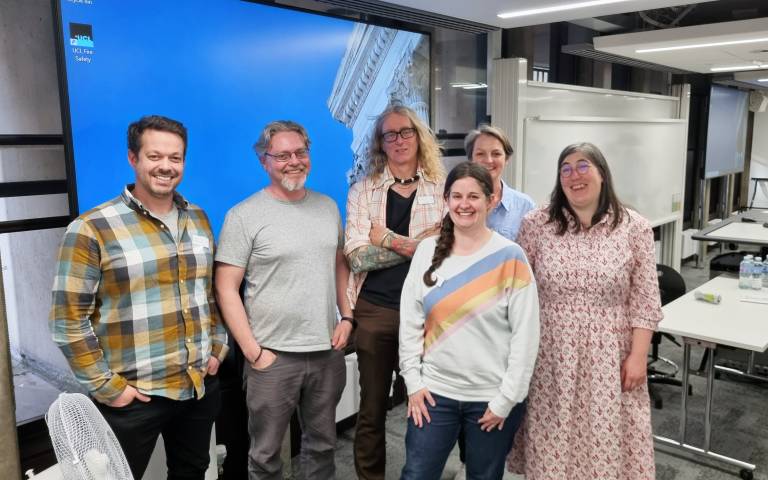Archaeology South-East celebrates 50th anniversary!
30 April 2024
This month sees ASE turn 50! The Sussex Archaeological Field Unit, as it was known then, was established half a century ago, back in April 1974.

From the Sussex Archaeological Field Unit…
In April 1974 a new project was launched. It represented something unique, not only in the history of the Institute of Archaeology, but also in archaeological work in Britain. Rescue archaeology was being reorganised on a regional basis, and out of a collaboration between the Department of the Environment and the Institute, the Sussex Archaeological Field Unit was born. With a remit for excavation and training the SAFU was the first full-time professional unit working in Sussex.

The publication that started it all – unfortunately no longer available for 25p!

Excavations in Lewes in 1974.
… to Archaeology South-East
The way ‘rescue archaeology’ is undertaken in the UK has undergone plenty of changes in the last 50 years. Most significant was the introduction of Planning Policy Guidance 16 (PPG16) in 1990, which brought archaeology within the planning process and heralded the start of developer-funded work. The Field Unit has kept pace with and adapted to these developments, with the Archaeology South-East name and brand established in 1996. More recently we expanded from our Sussex base with offices now in London and Essex. Nowadays ASE staff are working all across south-eastern and eastern England – and beyond!

Excavations at Varley Hall overlooking Brighton, 1992

Tea break on a site in Pevensey, 1994
A commitment to research
Alongside these developments, the Institute of Archaeology was on its own journey, joining University College London in 1986. We pride ourselves on our origins in and continued relationship with the Institute and UCL. ASE has always strived to bridge the much-debated divide between academic and commercial archaeology.
In 2008 we launched our own imprint - SpoilHeap Publications - with the Surrey County Archaeological Unit. Our books include research on Iron Age Warrior Burials, a Lower Palaeolithic butchery site, the burial ground at Queen's Chapel of the Savoy, and so much more. In 2021 we embarked on a new Open Access initiative, and many of our SpoilHeap books can now be downloaded and read for free! We’re publishing new research all the time so keep an eye on our publications website and socials for the latest books.

Celebrating our achievements
We kicked off our anniversary year with a session at the Roman Archaeology Conference, where ASE colleagues reflected on data from past excavations and explored new research in the region. We are proud to still be part of this vibrant and dynamic research community.

The ASE team at the Roman Archaeology Conference including Tom Munnery, Andy Margetts, Giles Dawkes, Anna Doherty, Louise Rayner and Elsa Neveu.
Over the next 12 months we plan to share more about our work on projects old and new and celebrate the achievements of our last 50 years. Look out for the #ASEat50 hashtag on social media!
The future of Archaeology South-East
We also look to the future. ASE continues to help train IoA students to be the archaeologists of tomorrow. We host students on the BA Archaeology with Placement Year, and work alongside IoA colleagues to deliver summer field schools. We’re doing ever-increasing amounts of public engagement to inspire local communities through the power of heritage and archaeology. We want commercial archaeology to be an exciting and fulfilling sector to work in but are very aware of the challenges and difficulties that still beset our profession and are working hard to be part of the solution.

UCL Institute of Archaeology placement student Sakshi (left) on site
We’re looking forward to sharing more about our archaeological journey, past, present, and future, throughout the year! Colleagues across ASE will be diving deeper into our history (anyone remember South Eastern Archaeological Services?) and exploring some of the issues affecting our sector.
Here’s to the next 50 years!
Louise Rayner
ASE Director
 Close
Close

